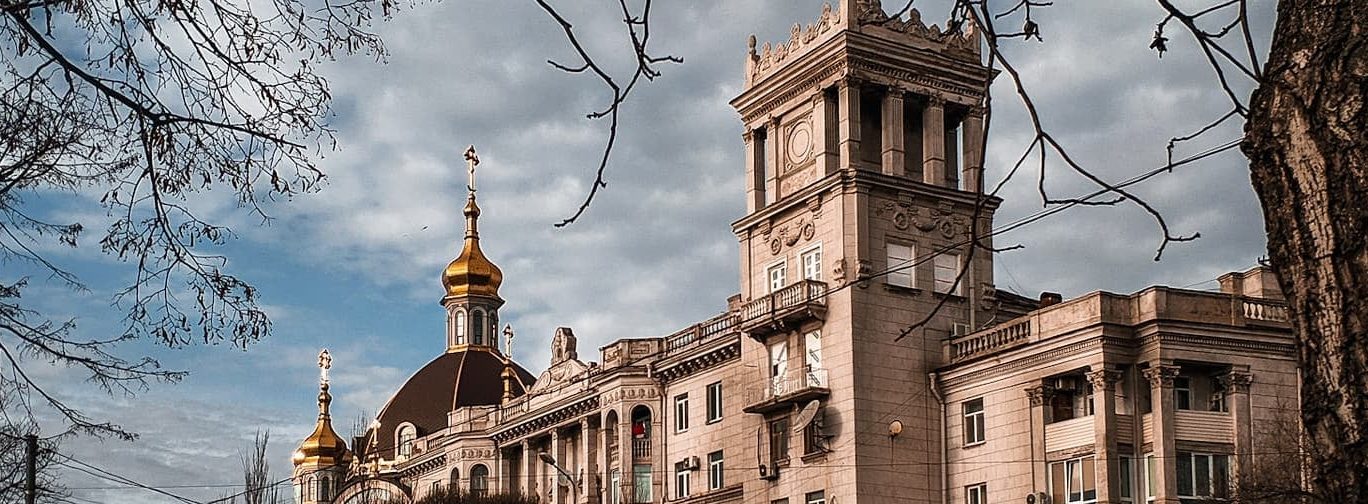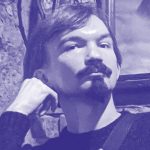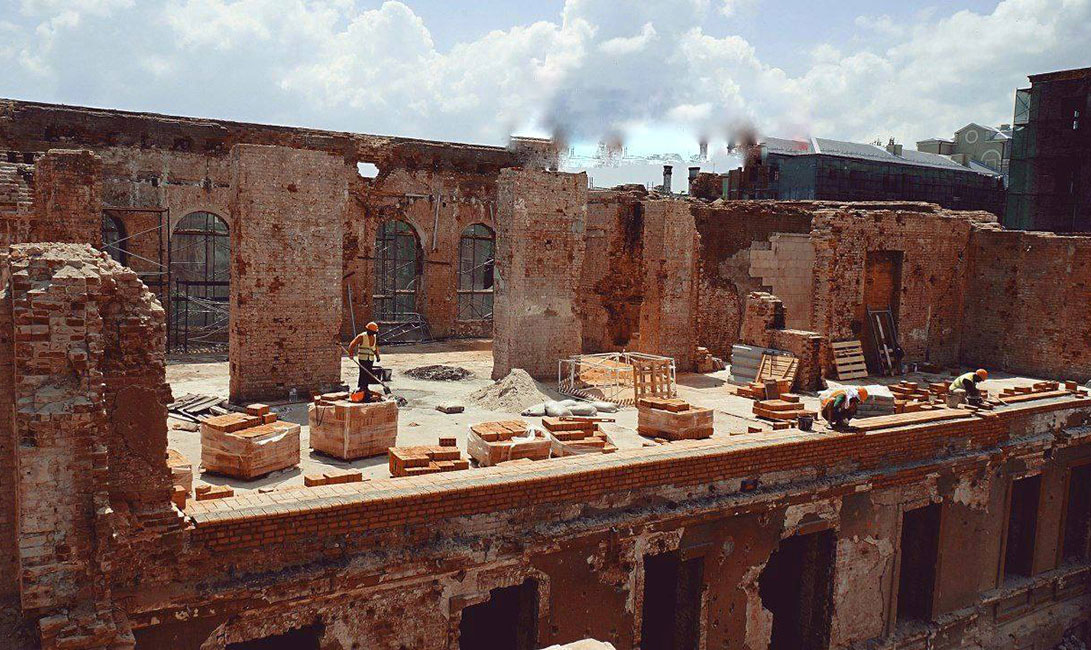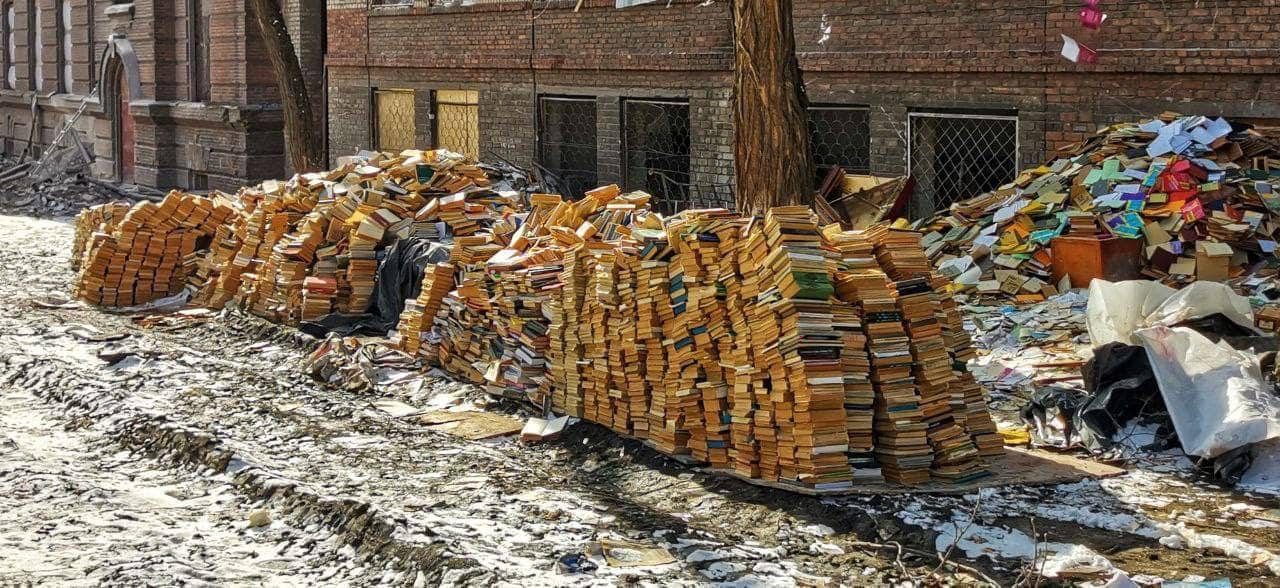* ESC - close the search window
essay
Grieving a vanished Mariupol: when statues depart and myths endure
04.03.2024
I.
It’s really hard for me to write this essay. Neither requiem nor obituary falls within my preferred genres. But Mariupol is my favorite city. The city where I used to lead tours. The city where I used to wander alone. The city that I heard so much about that it felt like home even before my first visit. It’s also the city where my academic advisor at the Kyiv-Mohyla Academy, Natalya Amelchenko, started her career in teaching.
II.
This city is gone now. And given the stalemate on the front of the Russian-Ukrainian war, it seems there will be no more of it. Mariupol will now live on only in writings like this one and in the memories of the residents who survived. Let this serve as a monument to Mariupol instead of the touristic brochure that Serhiy Kireyev and I envisioned but never had the chance to realize.
III.
There are cities deemed immortal like Rome, Paris, Kyiv, Prague… And then there is a Russian-Ukrainian war. This conflict serves as a grim reminder that not all cities are immortal, as evidenced by places like Mariinka, Volnovakha, Hulyaypole, Mariupol…
What is the difference between eternal cities and transient ones? After all, both categories encompass cities inhabited by people, filled with kindergartens, schools, cafes, universities, factories, churches, and graveyards used by generations.
IV.
Myth sets eternal cities apart from transient ones; myths are passed down through generations, migrating from book to book, from postcard to postcard, from one advertisement brochure to another.
This is precisely why Rome is immortal; it’s why Paris and Kyiv, each in their own way, are considered North Rome; why Prague is not only the capital of the Czech Republic but also of the Holy Roman Empire and last but not least, the city of alchemists, capital of German Hermes Trismegistus (Emperor Rudolph II), the city of Johann Georg Faust, Johann Dee, Edward Kelly, Tycho Brahe, Johannes Kepler…
It is why every charming town, the kind of place you dream of calling home, is likened to a “little Paris”?
V.
In 2019, I went to Mariupol to participate in the StartUp Hoholfest, arriving a week before the festival started. So my role in this event was to lead a storytelling tour — sharing my personal perspective of the city — a city I had only been in for a few days. Artists, journalists, weirdos, and other iconic inhabitants were to help me with this endeavor.
I explored Mariupol on foot for a week. This was a time for inspiration. I engaged with many remarkable interlocutors such as art collector and museum worker Vyacheslav Dolzhenko, hosts Alevtyna Shvetsova and Mykhailo Zahreba, CEO of Mariupol Film Festival (and yes, Mariupol had its own film festival) Olha Novikova, activist Mykola Shevchenko…
VI.
Mariupol, at its peak during my visits, inspired me to embrace the typical clichés used by tour guides, such as Little Paris, the City of Roses, and the City of Love.
“Actually those cliches, despite their banality, do favor the city, and it’s particularly evident now. Russian propaganda will no longer refer to Mariupol as Little Paris, The City of Roses, or The City of Love… Now no one would dare compare Mariupol with Paris during World War II. Because, even when considering the Western front of WW2, the Russian-Ukrainian war has already surpassed it in terms of barbarism.”
VII.
2019 was a challenging year for Paris. It was the year of the fire in the Notre Dame de Paris cathedral, which, without exaggeration, the whole world watched, mourning its gargoyles and its relics, and for the entire monument celebrated and immortalized by Victor Hugo.
And suddenly in the center of Mariupol, in someone’s backyard, I saw a garden of peculiar stones. It was clear that the stones had been deliberately arranged to draw attention to their pretentiousness, and that they were older than the building built after WW2 in the style of the Stalinist Empire.
This discovery quickly wove itself into the narrative for future tours. These were the gargoyles that flew away from Notre Dame de Paris cathedral, trying to escape the fire. They had found shelter there in a cozy Mariupol yard. From the grandeur of Paris to the intimacy of Little Paris!
VIII.
That yard soon became a highlight of my Mariupol tours. So on the first day, after completing my assignment for StartUp Hoholfest, I took sightseers there.
And just as I was telling my fantasy about the gargoyles flying out of Notre Dame, a man emerged from the entrance across the street, clearly a resident. Courteously listening to my story, he asked who we were and where we were from. But the conversation quickly turned to him.
IX.
A city is first and foremost defined by its local eccentric population. They breathe life into it. The weirdos are not merely urban legends, they are local enthusiasts, collectors, and individuals who are devoted above all to their passion, rather than to pragmatism.
One such individual was Mr. Vyacheslav. Whenever he learned of a building being dismantled and spotted an intriguing stone, he always found a way to acquire it, whether through money or goods. Thus, his backyard transformed into a rich garden of assorted stones and, as my imagination had conjured, the gargoyles that became an integral part of the Mariupol story.
X.
Vyacheslav’s collection extended beyond bizarre stones from ancient buildings. In the basement of an apartment building, in which Mr. Vyacheslav lived with his mother, he amassed an impressive array of antiquities. He personally cleared and cleaned this cellar to house his treasures, effectively creating a private club-museum right in the heart of Mariupol.
The entrance to the museum was adorned with another stone — one of the two remaining from the Khramplatsky Cathedral, which was blown up by the Bolsheviks in the thirties. The cathedral was built in such a way so the explosives detonated, and the entire structure was momentarily lifted into the air. When it finally crashed down, the cathedral’s bell tower remained intact on the ground and had to be dismantled separately. Of the remnants, only two stones were left, one of which Viacheslav brought to his museum.
The museum also proudly displayed a genuine Polovets baba (a unique tombstone stone statue of the Polovtsians (Kipchaks, Cumans), monuments of sacred art from the 9th-13th centuries. These statues symbolized ancestors and were placed in specially constructed sanctuaries on the tops of high mounds or hills), rescued by Mr. Vyacheslav from a construction site where it was in danger of being buried in a new building’s foundation.
XI.
2019 marked the sixth year of the Russian-Ukrainian war. Now, with the full-scale invasion by the Russian army in Ukraine ongoing for two years, those earlier years feel almost like a time of peace — emphasis on “almost,” because they were not truly peaceful.
Indeed, in 2019, the frontline had stabilized and became nearly immobile, a condition that persists today. The dynamics surrounding the Russian-Ukrainian conflict seemed to freeze, entering a prolonged state of near-stasis that could last for decades. After the initial occupation week — referring here to the first instance in 2014 — Mariupol remained within Ukrainian territory, standing as the largest city by the Azov Sea.
XII.
It strikes me as both odd and entirely expected that the years from 2015 to 2022 marked a period of growth for Mariupol, reinforcing its status as Ukraine’s southeastern bastion. The city evolved, becoming more refined in stark contrast to the turmoil just beyond the front line.
Mariupol transformed into more than a strategic port and industrial hub; it blossomed into a city of cafes, parks, and plazas — truly adopting the character of a European city. Furthermore, it was a renaissance to its historical roots: in the era of the Russian Empire, it thrived as a commercial port, akin to a smaller Odesa on the Sea of Azov.
The city’s identity as an industrial powerhouse was a development of the Soviet era, positioning it within the broader, somewhat alien context of the Donbas region.
XIII.
The surface of the sea divides air and water: both realms teem with life, yet survival in one means demise in the other. Birds soar above the sea; fish swim in its depths.
A seagull, in love with a sturgeon in the sea, found their love mutual but doomed. How could they be together? The seagull skimmed the sea’s surface in grief, while the sturgeon leapt towards the air, until a sage advised a way for them to unite. The seagull must soar high, nearly to the Sun, then dive into the sea, while the sturgeon must sink to the sea’s bottom and thrust upwards with all its might towards the sun. If both the seagull and the sturgeon did this at the same moment, at the point where air meets water, they would merge into one.
They followed through: the sturgeon dived to the sea’s depths, the seagull ascended towards the Sun, and then, simultaneously, they moved towards each other at the meeting point of air and water, becoming one creature, a Seageon, unknown even to Google.
XXIX.
Centenary stones from Kharlampiev Cathedral. The millennial Polovets baba. Mr Vyacheslav’s museum and apartment. The Drama Theater. Women. Children. The city center. All turned to ashes by Russian bombs.
“The gargoyles found no peace in Mr. Vyacheslav’s backyard. The fire that once engulfed Notre Dame pursued them here — this time, originating from the east.”
It’s not scary when people are leaving the city, it’s scary when statues are leaving it.
XXX.
Even Russian bombs cannot obliterate the legend of the Seageon. Nor can they reduce my tours of Mariupol to ashes, despite having destroyed many of the city’s key landmarks.
The essence of a city lies not in its buildings, but in its people and their myths.
XXXII.
As I conclude this essay, the spire of Notre Dame de Paris is under renovation, crowned anew with a golden rooster holding relics that endured the 2019 fire: a piece of Christ’s crown of thorns, hallowed by his blood, along with the relics of Saint Denis and Saint Genevieve of Paris.
Paris remains an eternal city.
The gargoyles knew where to return.
The myth I crafted has come full circle.
XXXIII.
Vyacheslav Dolzhenkov, alongside his mother and dog, successfully fled Mariupol and is now in Kyiv. Mr Vyacheslav is even contemplating the establishment of a new museum, proving it’s never too late to start a new life, especially when the most cherished aspects of the past persist.
Alevtyna Shvetsova and Mykhailo Zahreba also escaped Mariupol, though they parted ways. Alevtyna herself acknowledges that the Mariupol we once knew will never be the same.
As for Mykhailo, all contact has been lost.
Olha Novikova has relocated to Germany.
Mykola Shevchenko, the one who shared with me the legend of the Seageon, endured three months under occupation before finding a way out. He is now actively volunteering, gathering funds for drones, radios, batteries, thermal imagers, and other supplies for the Armed Forces of Ukraine.
They all left = they all survived.
XXXIV.
… but Olha Novikova continues to await the return of her son, Oleksiy, a member of the Mariupol territorial defense, from captivity…
RELATED: ‘Old Khata Book’: Looking for a place called home
Main image: Vic Dedoff
Translation: Polina Hrychanyk
Editing: Jared Goyette, Terra Friedman King
This publication is sponsored by the Chytomo’s Patreon community
the more you read, the greater the possibilities





